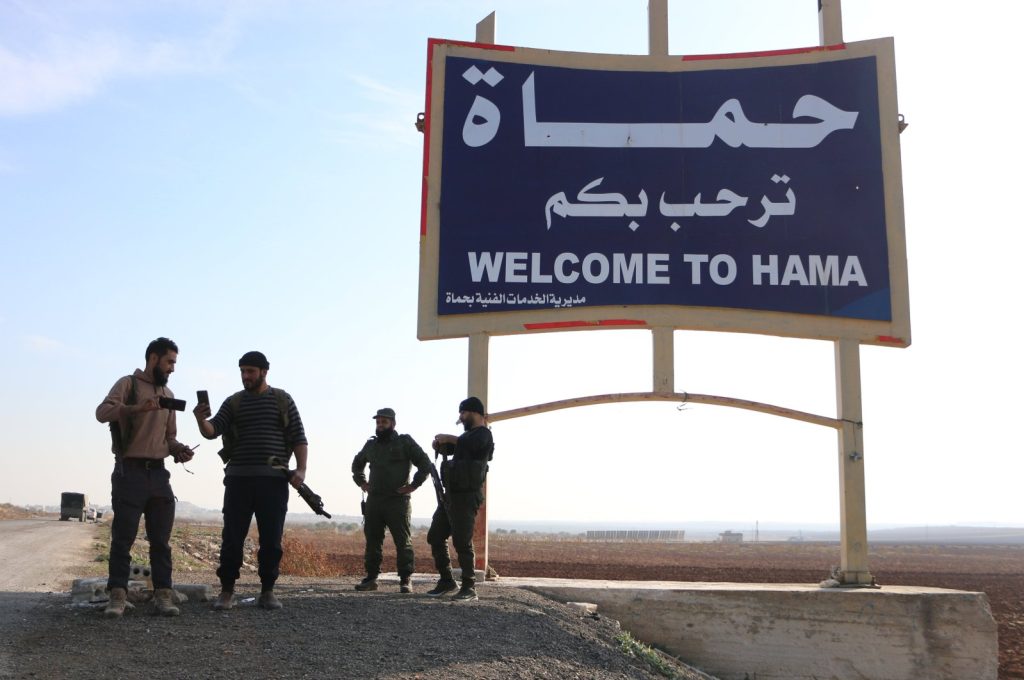Almost a week after they launched their lightning offensive, Syrian anti-regime forces are now “at the gates of Hama,” a war monitor said. Hama is the war-torn country’s fourth-largest city and its fall will likely mark a decisive moment for anti-regime forces, which already captured the second key city, Aleppo, in the first chapter of their offensive.
The Syrian Observatory for Human Rights said on Tuesday that clashes between anti-regime forces and the Assad regime troops sparked a large wave of displacement.
The sudden flare-up in the more than decade-old civil war in Syria drew appeals for de-escalation from across the international community.
The Britain-based Observatory, which has a network of sources in Syria, said people were being displaced from villages in parts of Hama province’s north and west.
“Large military reinforcements have arrived in the city of Hama to bolster the forces on the front lines and confront any attempted attack,” the Assad regime’s Syrian Arab News Agency (SANA) reported, citing a Syrian military source.
A statement from the Assad regime’s army command said its forces were striking “terrorist organizations” in northern Hama and Idlib provinces with Russian air support.
Russia is a key ally of Bashar Assad. Its 2015 intervention in the Syrian civil war turned the tide in his regime’s favor, but since 2022, the Ukraine war has tied down much of its military resources.
Hama was a bastion of opposition to the Assad regime early in the civil war. Its capture by the anti-regime forces would “pose a threat to the regime’s popular base,” Observatory director Rami Abdel Rahman said. The Observatory later reported the Assad regime forces launched a “counteroffensive” in the city in the early hours of Wednesday.
The countryside west of the city is home to many Alawites, followers of the same offshoot of Shiite Islam as the regime leader and his security chiefs. An Agence France-Presse (AFP) journalist in the northern Hama countryside saw dozens of Syrian army tanks and military vehicles abandoned by the side of the road leading to Hama.
“We want to advance on Hama after combing” towns that have been captured, an anti-regime fighter who identified himself as Abu al-Huda al-Sourani told AFP.
AFPTV footage showed anti-regime fighters clashing with the regime’s military in Halfaya, about 20 kilometers (12 miles) northwest of Hama.
The United Nations says nearly 50,000 people have been displaced by the fighting since it began last Wednesday. At least 602 people have been killed, mostly combatants but also including 104 civilians, according to the Observatory.
The exodus of civilians just as winter takes hold has triggered international concern. U.N. chief Antonio Guterres said he was “alarmed” by the violence and called for an immediate halt. The European Union and the United States called on all sides to de-escalate.
One anxious resident of Syria’s second city, Aleppo, who declined to be identified, spoke of panic as the anti-regime forces overran it on Friday and Saturday. “There were terrible traffic jams,” he said. But others remained trapped inside the city.
Nazih Yristian, 60, who lives in Aleppo’s Armenian neighborhood, said he and his wife had tried to flee, but the main road out had been cut. Since then, the couple have cloistered themselves at home, he said. “No one has attacked us so far, but we want to leave until things calm down. We have been displaced a lot and we will be displaced again.”
The Norwegian Refugee Council warned that the offensive “threatens to drag the country back into the darkest days of this near 14-year conflict.” “In Aleppo, NRC teams report food shortages as bakeries and shops shut down. Damage to water networks has also reduced domestic water supplies,” its Middle East and North Africa director Angelita Caredda said.
Russian President Vladimir Putin and his Iranian counterpart Masoud Pezeshkian pledged “unconditional support” for their ally, according to the Kremlin.
Putin later urged a “speedy” end to the offensive during a phone call with President Recep Tayyip Erdoğan.
Iranian Foreign Minister Abbas Araghchi meanwhile said: “If the Syrian government asks us to send forces to Syria, we will study their request.”
Neighboring Iraq, too, has expressed support, and on Tuesday, a pro-Iran group within the security forces called on the government to go further and send combat troops. A spokesperson for Kataeb Hezbollah, part of the Iran-backed “axis of resistance,” said the group had not yet decided to deploy its own fighters but urged Baghdad to act.
The regime also started detaining people aged 15-47 in the eastern Ghouta region of Damascus, citing their potential ability to bear arms, according to Anadolu Agency (AA). Many young men in the region are reportedly trying to hide to avoid arrest. Additionally, the area is facing severe challenges, including exorbitant food prices and a critical fuel shortage.
Eastern Ghouta has a grim history, notably when the Syrian regime carried out a chemical weapons attack on Aug. 21, 2013, killing over 1,400 civilians in the opposition-controlled area.
In 2018, the region again drew international attention due to relentless assaults by Syrian regime forces and Iranian-backed groups supported by Russian airstrikes. Thousands of civilians were killed, and humanitarian aid was blocked during the siege. In April 2018, anti-regime forces were ultimately forced to evacuate eastern Ghouta under intense military pressure.


